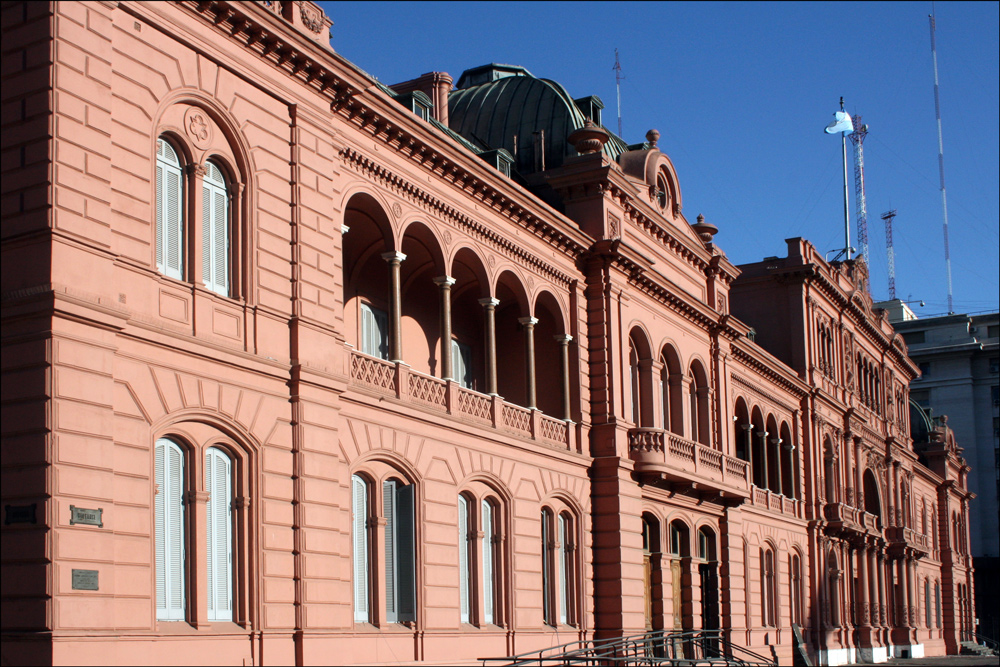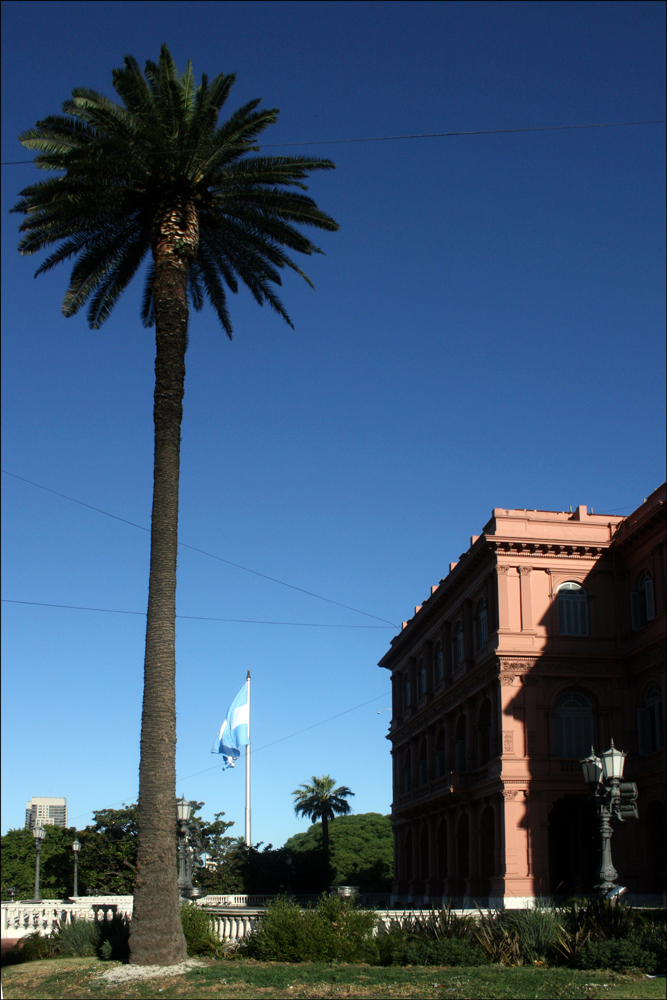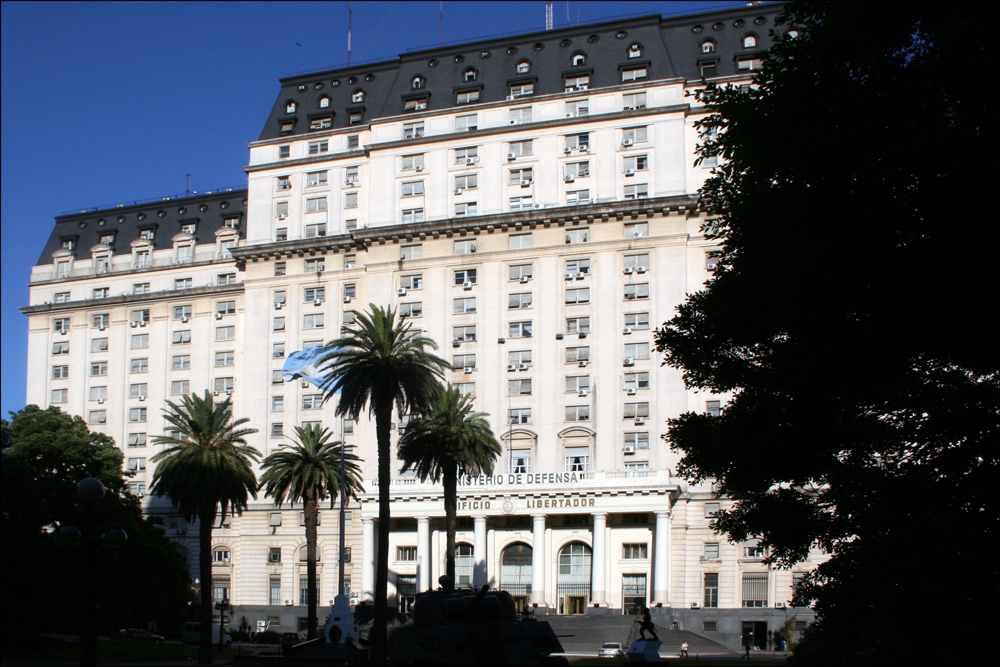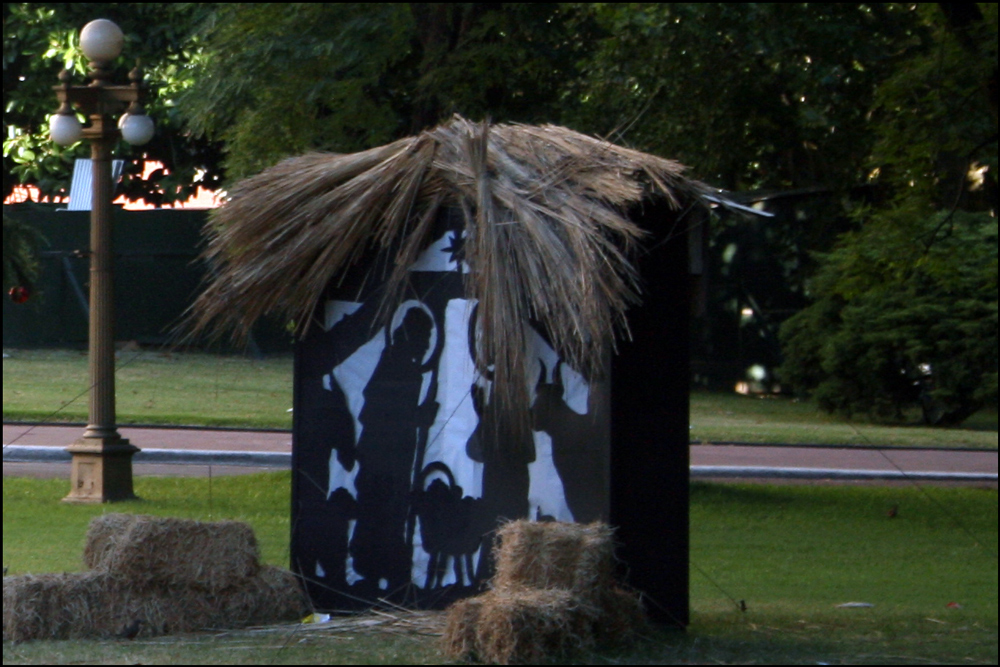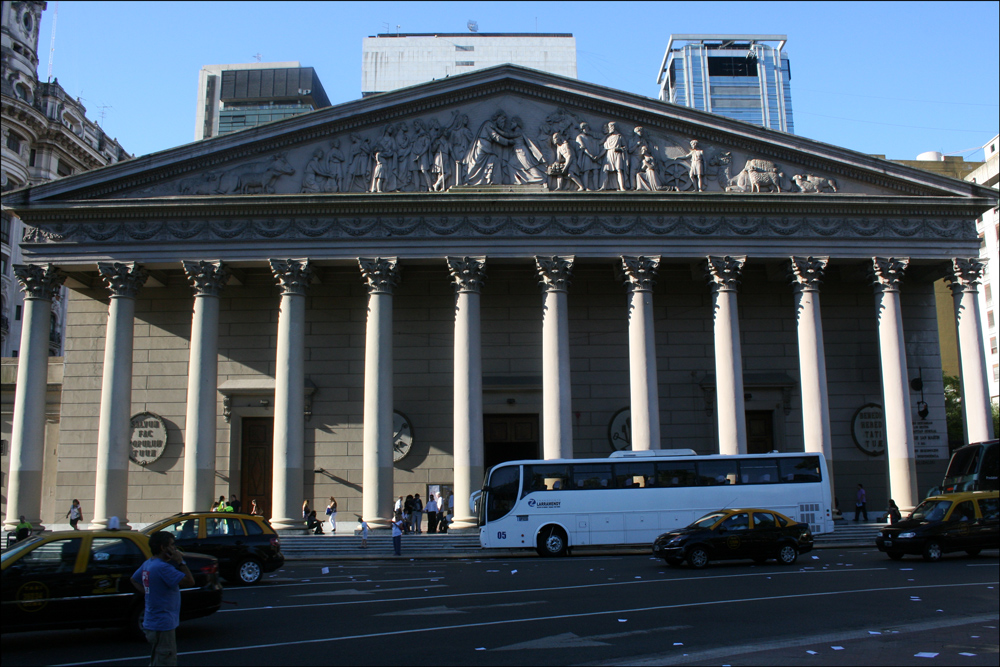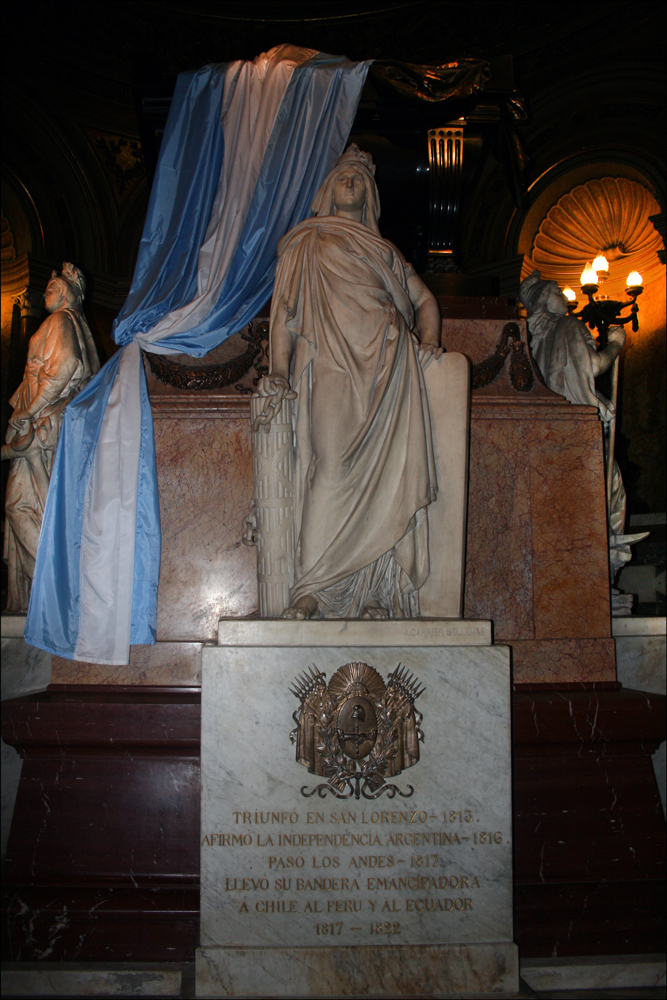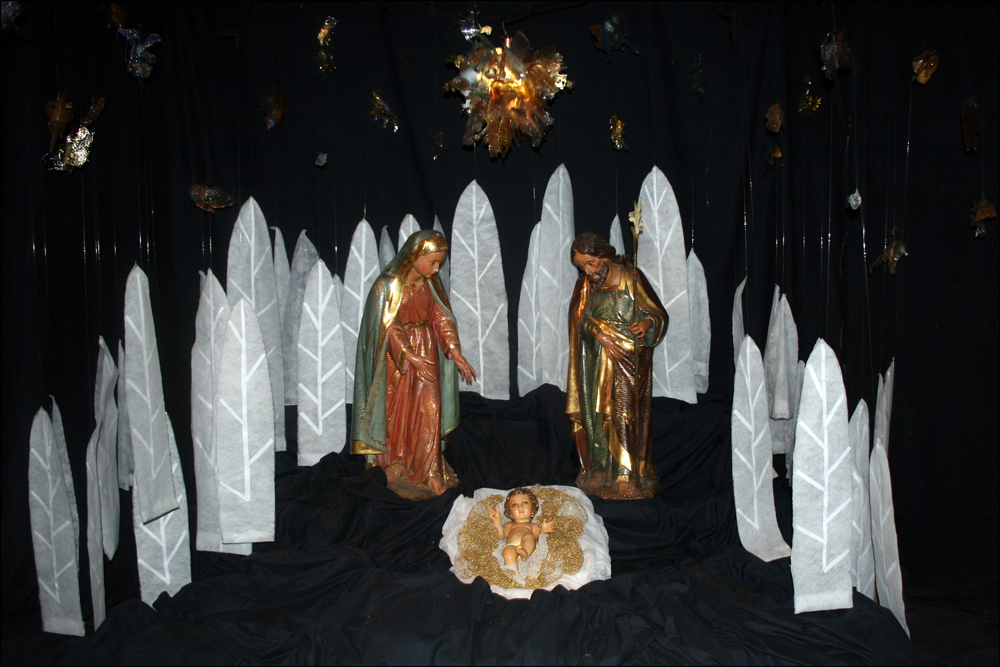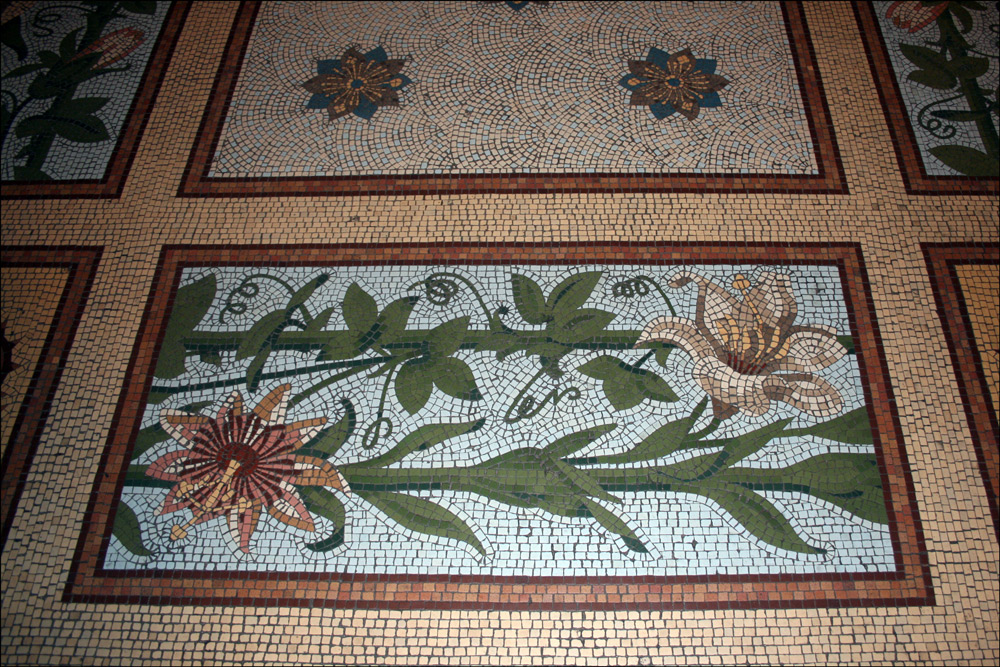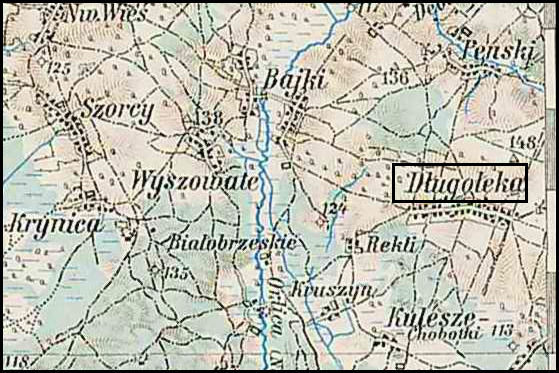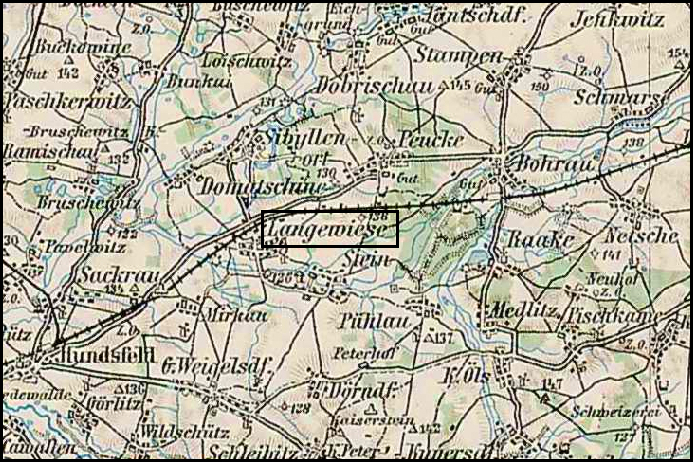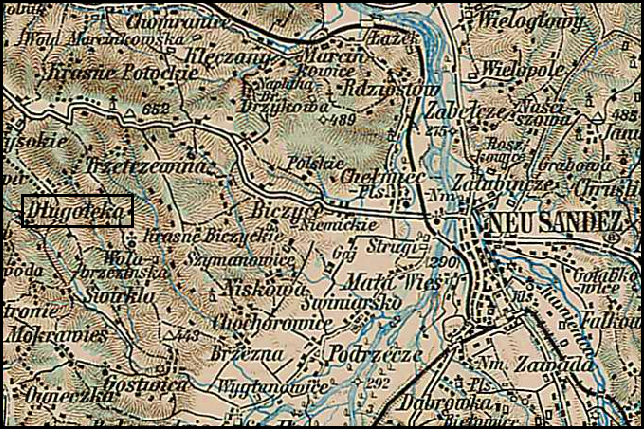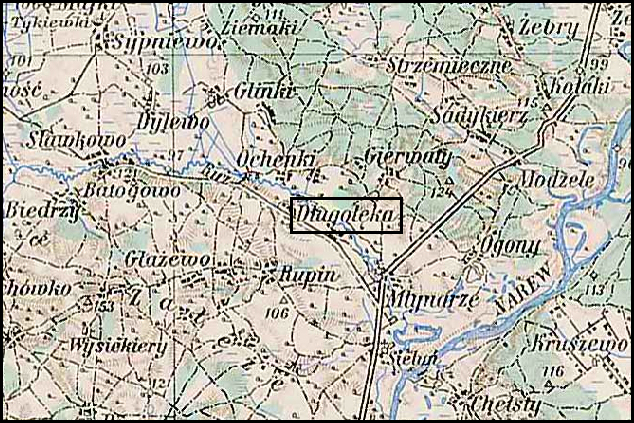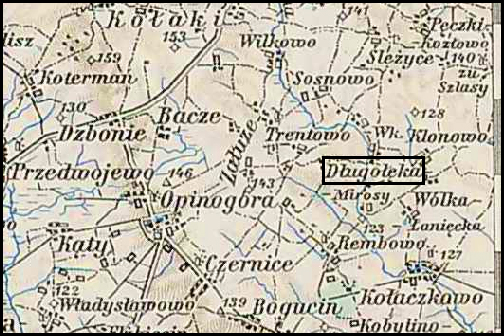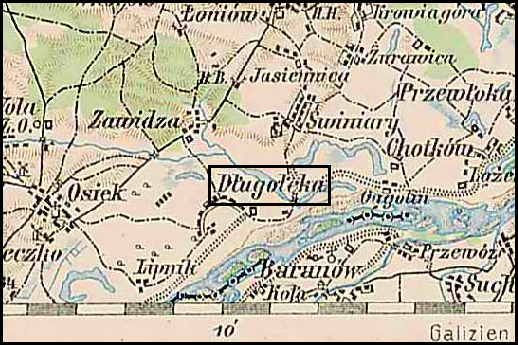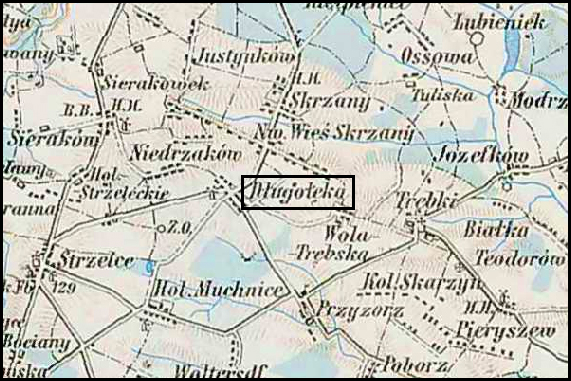Adjacent to the Plaza de Mayo stands the Casa Rosada (Pink House), the seat of the executive branch of Argentina’s federal government . The structure was completed in 1898 after the State House and Central Post Office were connected with an Italianate archway . The balcony where Evita Perón addressed the public can be seen in the first view below . Not far from Casa Rosada stands a monument to Christopher Columbus which was constructed in Italy, disassembled, and reassembled in Buenos Aires . The base of the monument included figures representing Civilization, Science, Genius and the Ocean . East of Casa Rosada stands the Edificio Libertador (Liberator Building) completed in 1938 and housing the Ministerio de Defensa (Defense Ministry) . And yes, this is still Christmastime and even the Defense Ministry displays a nativity scene .
The Casa Rosada (Pink House)
SOURCE: The Casa Rosada (Pink House) (Buenos Aires, Argentina), photographed by Stephen J. Danko on 30 Dec 2010.
Palm Tree, Flag of Argentina, and Casa Rosada
SOURCE: Palm Tree, Flag of Argentina, and Casa Rosada (Buenos Aires, Argentina), photographed by Stephen J. Danko on 30 Dec 2010.
Monument to Christopher Columbus
SOURCE: Monument to Christopher Columbus (Buenos Aires, Argentina), photographed by Stephen J. Danko on 30 Dec 2010.
Edificio Libertador (Liberator Building)
SOURCE: Â Edificio Libertador (Liberator Building)Â (Buenos Aires, Argentina), photographed by Stephen J. Danko on 30 Dec 2010.
Nativity Scene at the Defense Ministry
SOURCE:  Nativity Scene at the Defense Ministry (Buenos Aires, Argentina), photographed by Stephen J. Danko on 30 Dec 2010.
Copyright © 2011 by Stephen J. Danko

